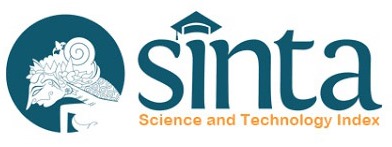Isolation and Characterization of Collagen from Salmon Skin (Salmo Salar) using Acid Method
Abstract
Collagen is a type of protein that is plentiful and has a wide variety of applications. Collagen is often derived from porcine and bovine, however, both sources are considered to transmit disease, particularly porcine sources, which haram to Moslem. There are some methods for collagen extraction, on of them using acid method. The purpose of this study was to obtain the best method of extraction and analyze collagen from alternative sources, specifically salmon skin, which is abundant. This study included two stages, i.e. pretreatment with sodium hydroxide for eliminating non-collagen proteins prior from salmon skin and extraction with acetic acid for collagen extraction. Pretreatment was carried out utilizing a split-plot design with parameters for determining the levels of non-collagen protein. The extraction step used a factorial completely randomized design to observe yields, amino acids, functional groups, and molecular weights. The results indicated that the extract was collagen. It was indicated by high glycine, alanine, and proline amino acid content. The result of SDS-PAGE showed the extracted was type I collagen was characterized by two identical 1 chains and one similar, but 2 different chains. The propeptides of type I procollagen have a similar composition. The most effective method for eliminating non-collagen proteins prior to extracting collagen from salmon skin was pretreatment with a 0.05 M NaOH solution for 10 hours. Collagen extraction using acetic acid at concentration of 0.5 M for 48 hours resulted in a yield of 12.79%.
Keywords
Full Text:
PDFDOI: https://doi.org/10.15578/squalen.756
Refbacks
- There are currently no refbacks.
ISSN : 2089-5690(print), E-ISSN : 2406-9272(online)
This work is licensed under a Creative Commons Attribution-NonCommercial-ShareAlike 4.0 International License.










